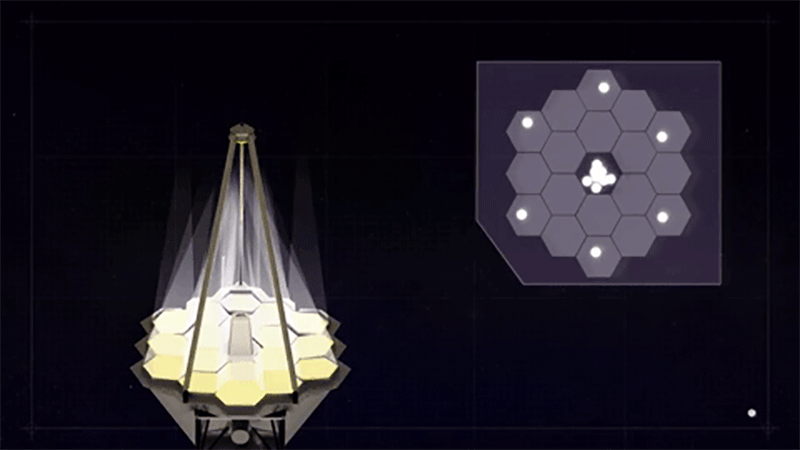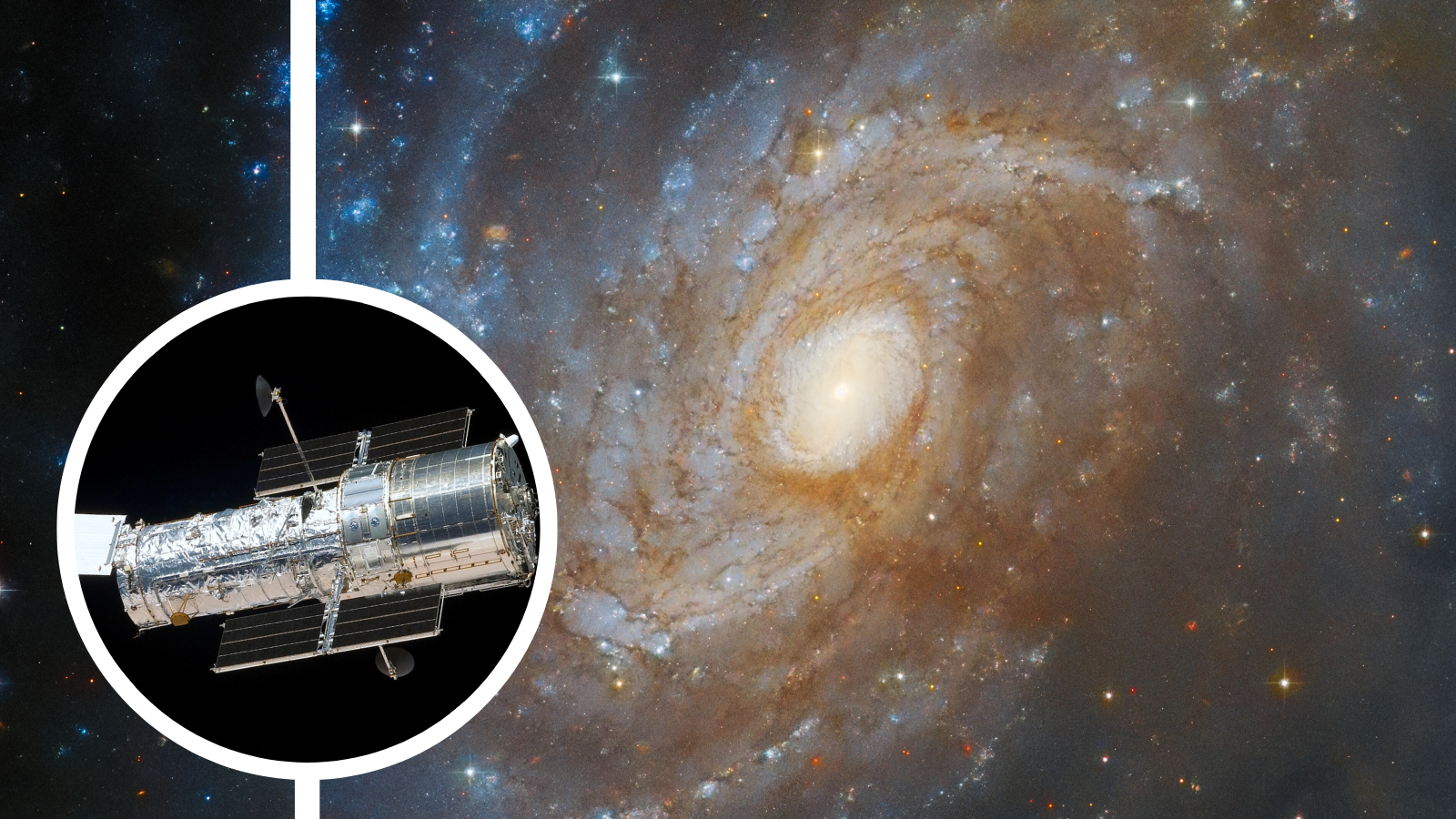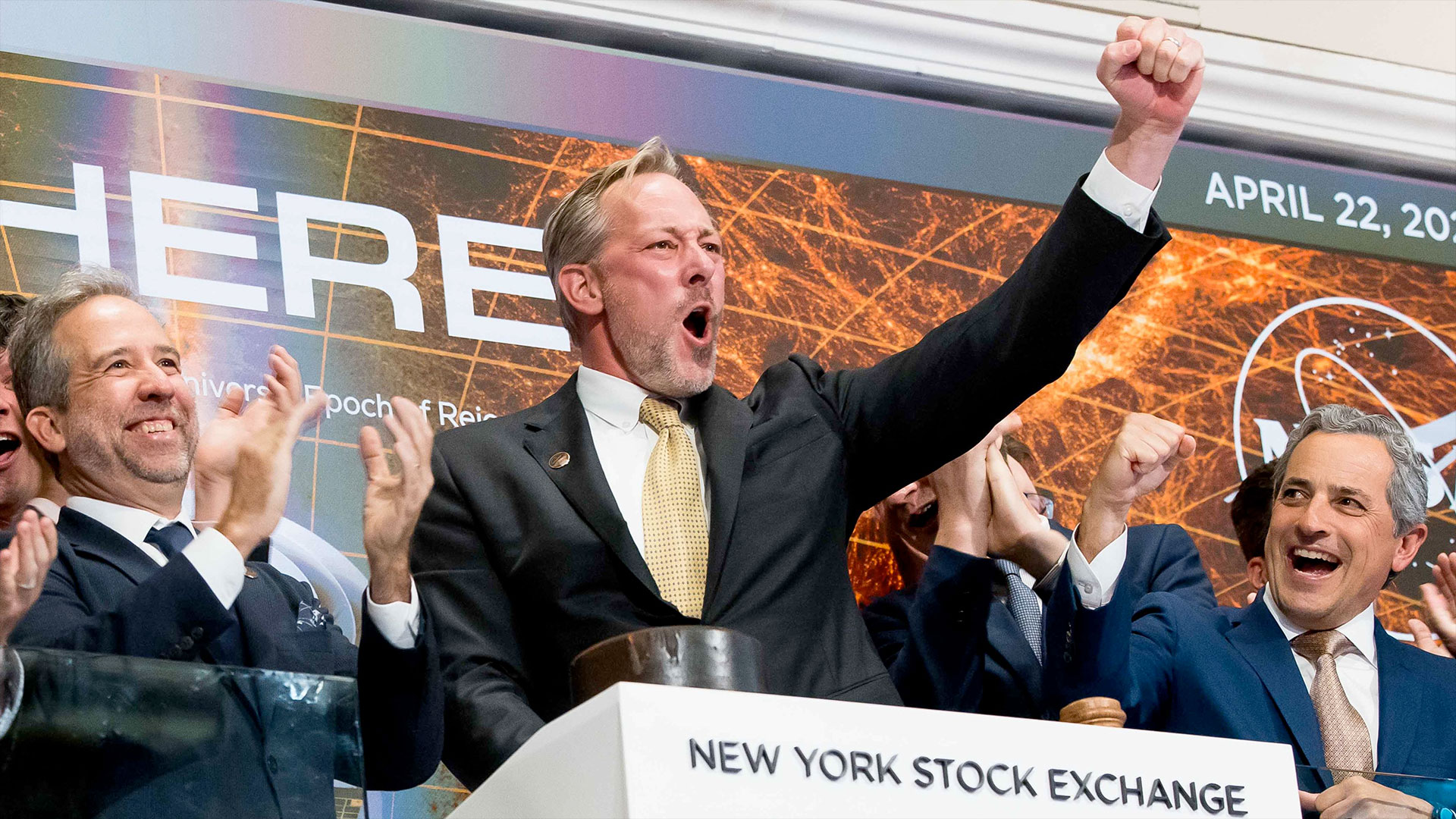James Webb Space Telescope Will 'Perfect Its Own Vision' in Orbit (Video)
NASA engineers will focus the James Webb Space Telescope from afar once it reaches space — and a new video from the agency shows how.
The James Webb Space Telescope, scheduled to launch in mid-2019, is set to be the Hubble Space Telescope's successor. Its optical range overlaps with that famous telescope, although the James Webb will focus more on near-infrared wavelengths of light. Its main mirror, which is more than six times the size of Hubble's, consists of 18 hexagonal segments that allow it to fold for launch. This means the fine adjustments needed to bring the array into focus will have to happen after the telescope is already in space.
The process is similar to laser corrective surgery, according to the statement that accompanied the video. Eye surgeons use a laser to measure the imperfections in the patient's cornea, the surface of the eye. In the same manner, engineers will use light from a distant star to determine the imperfections in the positioning of the James Webb's mirror segments, NASA officials said in the statement.

The James Webb will make its first adjustment by splitting the starlight it sees into its component spectrums. "The light from each segment will interfere with adjacent segments, and if the segments are not aligned to better than a wavelength of light, that interference shows up like barber pole patterns," Lee Feinberg, the mission's optical telescope element manager, said in the statement. The engineers will slowly bring the array into alignment using 126 small motors, called actuators: seven for each mirror segment.
To make finer corrections, the team will, again, direct the telescope at a bright star, and use the out-of-focus image to guide the final adjustments. Then the team aligns the secondary mirror to the primary, the tertiary mirror to the first two, and finally the scientific instruments to all three. The entire process is expected to take months, according to NASA. The engineers will need to check the mirrors' positioning every few days, just like a patient who underwent vision correction surgery would schedule regular visits to their eye doctor.
Email Harrison Tasoff at htasoff@space.com or follow him @harrisontasoff. Follow us @Spacedotcom, Facebook and Google+. Original article on Space.com.
Get the Space.com Newsletter
Breaking space news, the latest updates on rocket launches, skywatching events and more!
Join our Space Forums to keep talking space on the latest missions, night sky and more! And if you have a news tip, correction or comment, let us know at: community@space.com.

Harrison Tasoff is a science journalist originally from Los Angeles. He graduated from NYU’s Science, Health, and Environmental Reporting Program after earning his B.A. in mathematics at Swarthmore College. Harrison covers an array of subjects, but often finds himself drawn to physics, ecology, and earth science stories. In his spare time, he enjoys tidepooling, mineral collecting, and tending native plants.









